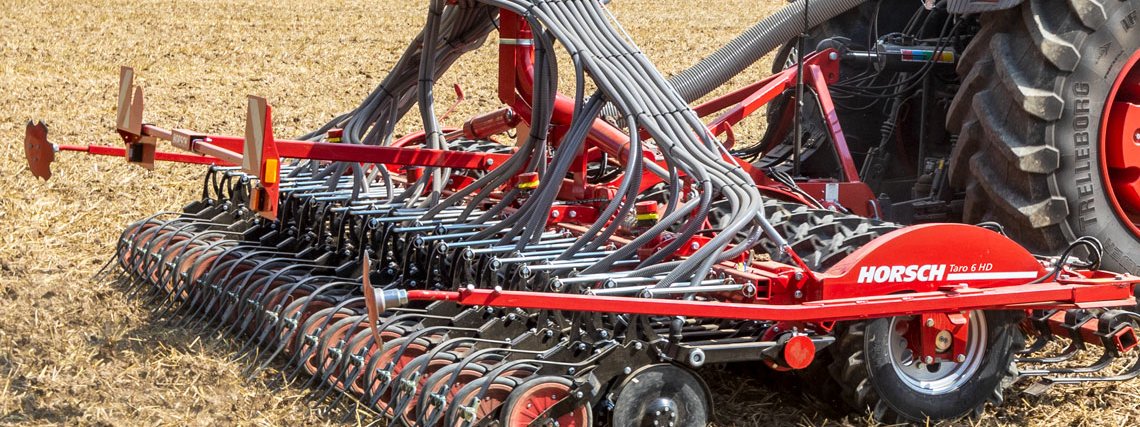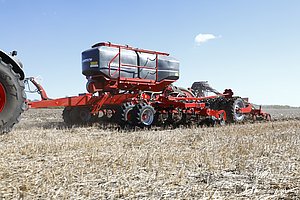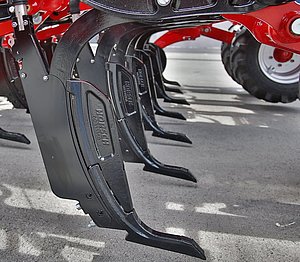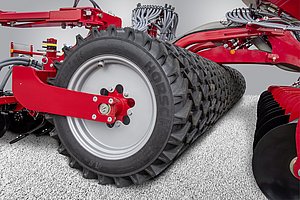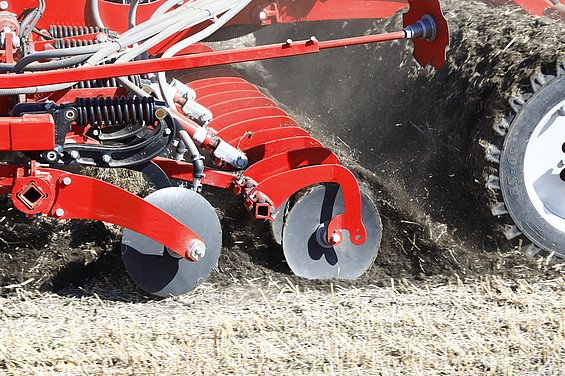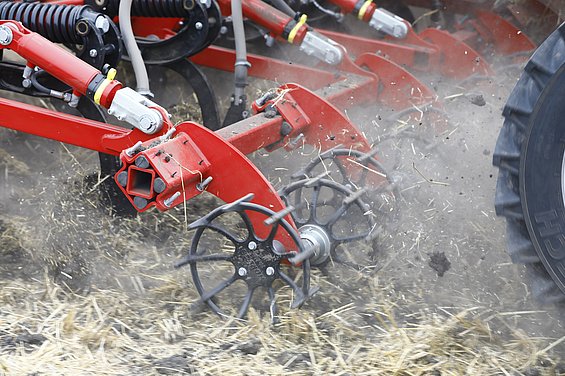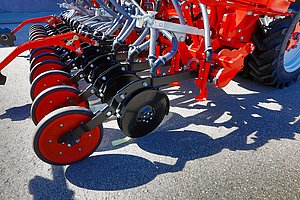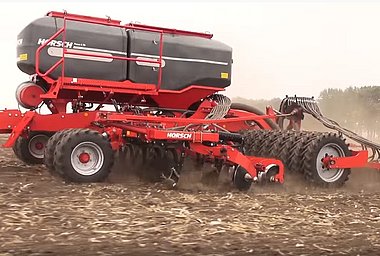StripTill & HORSCH Focus (part 1)
Efficiency and cost saving are important factors when it comes to choose the right sowing method. Depending on the soil, rotation and vegetation there are several options with regard to choosing the right drilling technology based on the farm-specific requirements. As the periods of drought are increasing, no-till and StripTill methods will become increasingly important in modern farming. Moreover, the cultivation of small strips with an integrated placement of fertiliser as well as exact sowing has enormous advantages.
- Residues of the previous crop guarantee a slower drying out of the soil
- Erosion protection due to organic residues on the soil surface
- Creation of humus
- Improved water balance
- Increased earthworm activity due to targeted, reduced tillage
- Residues of previous crops are removed from the seed horizon
- Thus, the soil contact of the seed improves
- In dry conditions, this leads to a better emergence.
The HORSCH Focus does not only excel with regard to sowing row crops like maize or beets. The advantages of StripTill also become evident for cereals, but especially for rape seed. For rape there is a considerable yield increase as due to the targeted deep tillage and the attracting effect of the fertiliser the root growth is influenced in a very positive way and droughts can be endured more easily.
For more than 10 years the Focus line has been part of the HORSCH product range. It has been developed further and further over the years based on the most different requirements and customer demands and can adapt to various conditions due to the wide range of equipment options.
The main features of the Focus family include the deep loosening of the soil with a targeted fertiliser placement and the exact sowing – combined in only one pass. To achieve this HORSCH used the well-proven components of its seed drills and tillage tools. Thus, passes are reduced, the soil is preserved and humidity is kept in the soil. The HORSCH Focus line is available with working widths ranging from 4 to 7 m. The kick-off for the long-awaited 3 m version will be in autumn 2020.
The different working steps of the Focus are divided as follows:
Zone I - TerraGrip tines
The deep loosening of the soil as well as the targeted placement of the fertiliser depot below the seed rows allows for an optimum root development.
The fertiliser can be placed in one or two different soil layers.
In addition, the removal of harvest residues from the root area and the transport of wet soil into the germination horizon guarantee ideal conditions for the seed.
Zone II – Tyre packer
The well-proven HORSCH tyre packer with 12 layers for an extra long working life guarantees a targeted, deep consolidation.
The resulting soil contact leads to an optimum seedbed preparation in front of the seed coulters.
The high tyres with a diameter of 100 cm guarantee an optimum clearance even on very light soils and prevent that material piles up in front of the packer.
Depending on the setting the disc levelling system can either create little ridges or level the surface. We recommend this version on light soils. On medium and heavy soils, we recommend the crumbling levelling system. It produces additional fine earth to make sure that the seed grain is connected to the capillary water in an optimum way.
Zone IV – Seed coulters
HORSCH and the Focus line are famous for the variety of equipment options for the most different crops and conditions. For sowing into soils with few harvest residues we recommend the TurboDisc seed coulter, for sowing high amounts of straw the TurboEdge seed coulter. The individually and press-wheel controlled seed coulters perfectly adapt to the soil and guarantee a precise placement of the seed.
